If Ishikawa Prefecture isn’t on your radar for your next Japanese travel destination, it’s about to be. Boasting rich culture, breathtaking land and seascapes, as well as delectable cuisine, Ishikawa is the perfect place to explore and relax. Split into the remote Noto Peninsula, the historical castle town of Kanazawa, the seafaring onsen city of Kaga and the mountainous Hakusan, each of the prefecture’s four regions offer something different to enthrall nature lovers and history buffs alike.
In Ishikawa Prefecture, you can wander through Edo-period streets and sit down with Ishikawa’s famous confectionery, witness dramatic alpine vistas and dip into an onsen after a long day of exploration. Below are 70 things to do in Ishikawa to make your trip an unforgettable one.
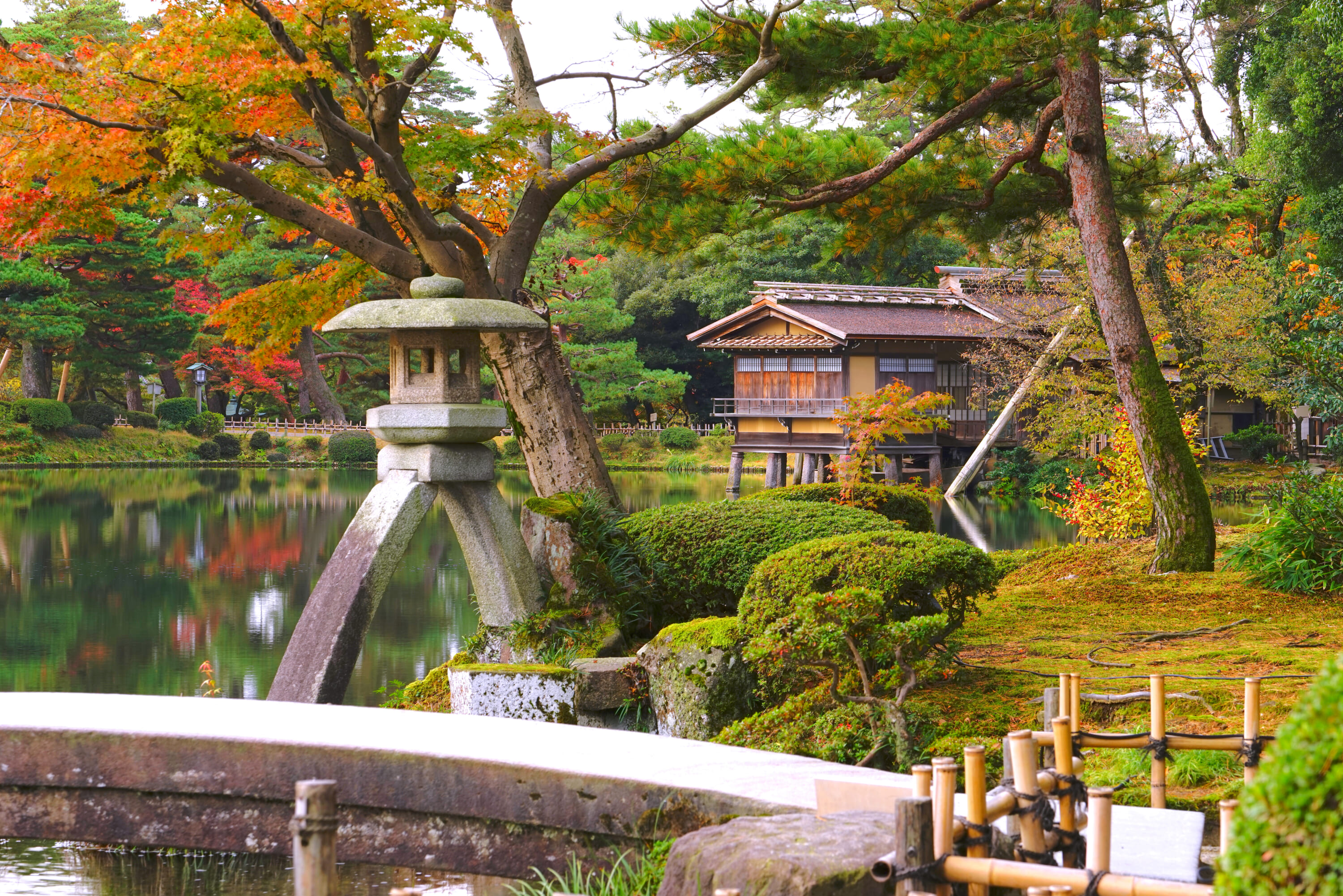
Must-dos
1. You shouldn’t miss Kenroku-en. Built during the Edo period by Maeda Tsunanori of the Kaga Clan, Kenroku-en is one of the three major gardens in Japan and the face of Ishikawa tourism. Enjoy an hour-long stroll through the seasonal flora of Kanazawa.
2. Also in Kanazawa, another major tourist destination is Kanazawa Castle Park. Facing Kenroku-en, Kanazawa Castle was the seat of the Maeda Clan until the end of the Edo period. Though the structure has burned down a few times, you can explore the central structures of the turrets, Honmaru Palace, Ishikawa-mon and more.
3. Kanazawa is blessed with three well-preserved chaya (a teahouse-sometimes-exclusive-restaurant where geisha would perform) districts, the largest being the Higashi Chaya district. There are two chaya open to the public, still operating as a teahouse or as a museum. You can also stop by cafés and shops that are housed in the old buildings.
4. If you’re looking for a pop, Instagram-worthy destination, you have to check out the 21st Century Museum of Contemporary Art, Kanazawa. You might recognize the iconic immersive swimming pool exhibit. The museum always has new and exciting programmes, so it’s well worth a visit.
5. Ishikawa Prefecture is also a popular hot spring destination. Kaga Onsen-kyo is made up of four major onsen villages: Yamashiro Onsen, Yamanaka Onsen, Awazu Onsen, and Katayamazu Onsen. With a public bath in the center of each town, some towns hold onto their Meiji roots, while others are modernized. Regardless of your preferences, the Kaga Onsen springs, sometimes referred to as “water for longevity,” have healing properties that you can enjoy among the beautiful architecture and nature.
6. Myoryuji, previously referred to as Ninjadera, or the Ninja Temple, is actually not associated with ninja. It was built by the Maeda lords, who circumvented the shogun’s building restrictions by creating a disguised military outpost connected to the castle. Guided tours will show you the intricate defenses such as hidden tunnels and traps.
7. Located in the Yamanaka Onsen area, Ayatori Bridge is a 94.7-meter-long bridge known for its winding pattern and wine-red color. Along with being an interesting sight with the unique architecture among the lush nature, you can also catch some great sights on the bridge, including the Kakusenkei Gorge.
8. The Shiroyone Senmaida Rice Terraces attract photographers from all over the world. With rice paddies built on a hill that contrast with the ocean background, the rice terraces are stunning all year-round.
9. Another magnificent sight, the Chirihama Nagisa Driveway is a sandy beach in the Noto Peninsula that is uniquely open to cars. You can roll down the windows and drive along the Sea of Japan, and even park your car to take a dip in the water mid-drive.
10. Mount Hakusan, one of the three most important mountains in Japan, sits in the middle of Hakusan National Park. If you’re quite outdoorsy, you can attempt to climb the 2,702-meter mountain to the peak, but the Hakusan Alpine Botanical Garden, open during June and July, is a great way to see the alpine flora without getting exhausted.
11. Registered in the Guinness Book of World Records, Ishikawa is the proud owner of the world’s longest bench. An impressive 460.9 meters long, the famous bench is in the Noto Peninsula and is a fantastic spot to watch the sunset.
12. If you’re a foodie and always on the hunt for the freshest seafood, Omicho Market is the place for you. A busy, colorful network of almost 200 shops selling fresh local seafood and produce, you can step into Kanazawa’s rich cuisine culture. Omicho Market gets busier during lunchtime when visitors flock to the restaurants near the market, so if you’re planning to grab lunch there, make sure to plan in advance.
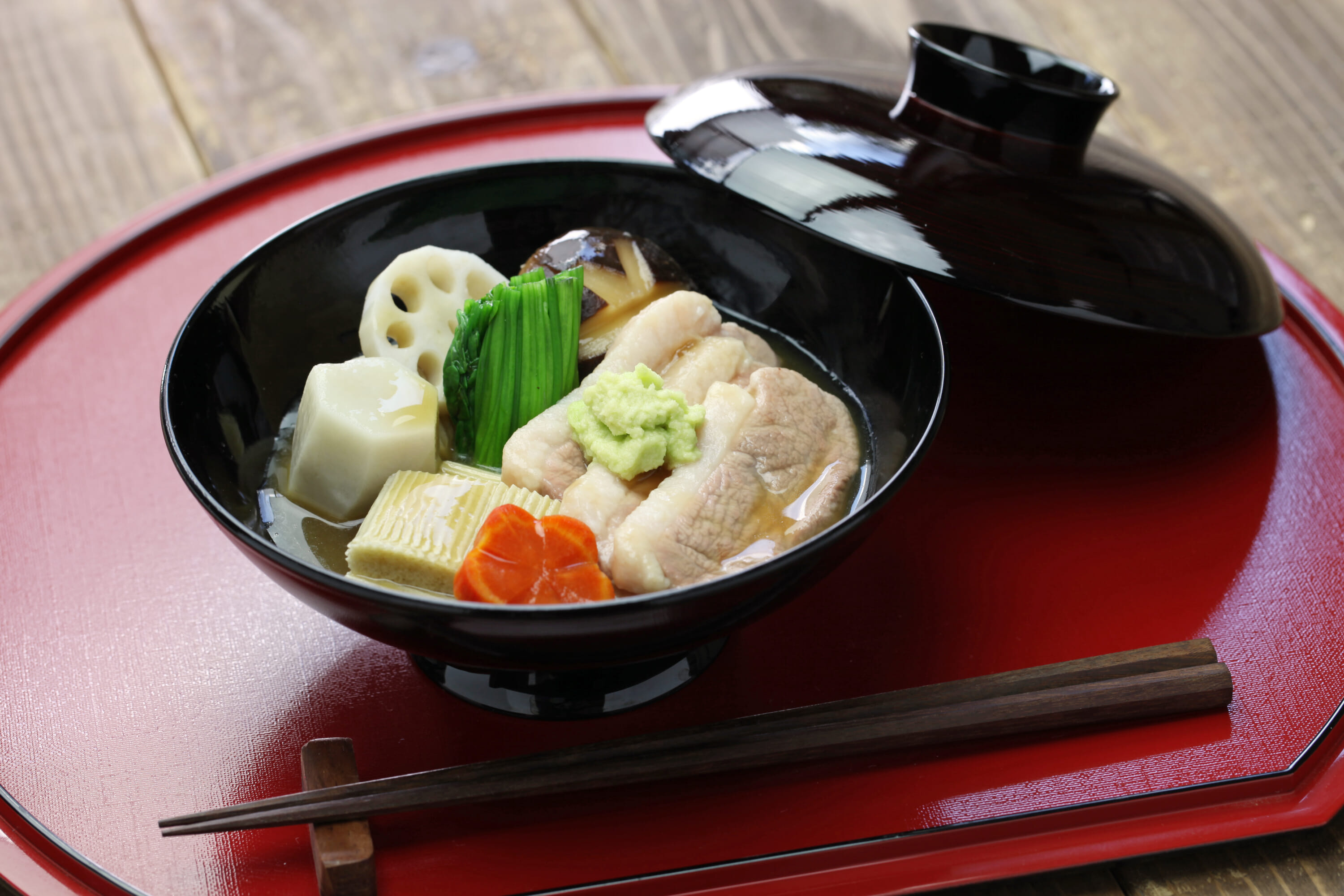
Food and Drink
13. Ishikawa has plenty of delectable dishes to choose from, but it’s particularly known for its crab. The Kano-gani, or the snow crab, is available in Ishikawa during the winter months. For some incredible kani, check out Izakaya Kappo Tamura, a fancy Japanese pub often visited by celebrities.
14. Since Ishikawa has access to the Sea of Japan, its seafood scene is incredible as well. Try out its famous sweet shrimp, nodoguro, oysters and winter yellowtail while you’re there.
15. One of Kanazawa’s representative foods is jibuni, a hot pot with a thick soy-based broth, duck, seasonal vegetables and sudare-fu (wheat gluten bread). Visit Gyohan for some authentic, delicious local dishes, including jibuni.
16. Ishikawa is also known for its Japanese confectionery. Pick up some for yourself or as a gift, like these adorable Fuku Usagi manju.
17. Hirami Pan is an uber-popular breakfast spot. Make sure to line up before the store opens to get a bite of its freshly baked bread.
18. Visit Kaga Fruit Land to go strawberry, grape, cherry or apple picking, depending on the season.
19. Kanazawa happens to have a remarkably good sandwich scene. Check out Espresso Bar Kesaran Pasaran for its incredible coffee, sandwiches and more.
20. Located beside Kanazawa Castle Park is Mamezarachaya, a Japanese café that serves Japanese confectioneries, treats and matcha.
21. From April to October, you can sit at the Kakusenkei Kawadoko Riverside Cafe and watch the slow-moving waters while eating traditional Japanese treats.
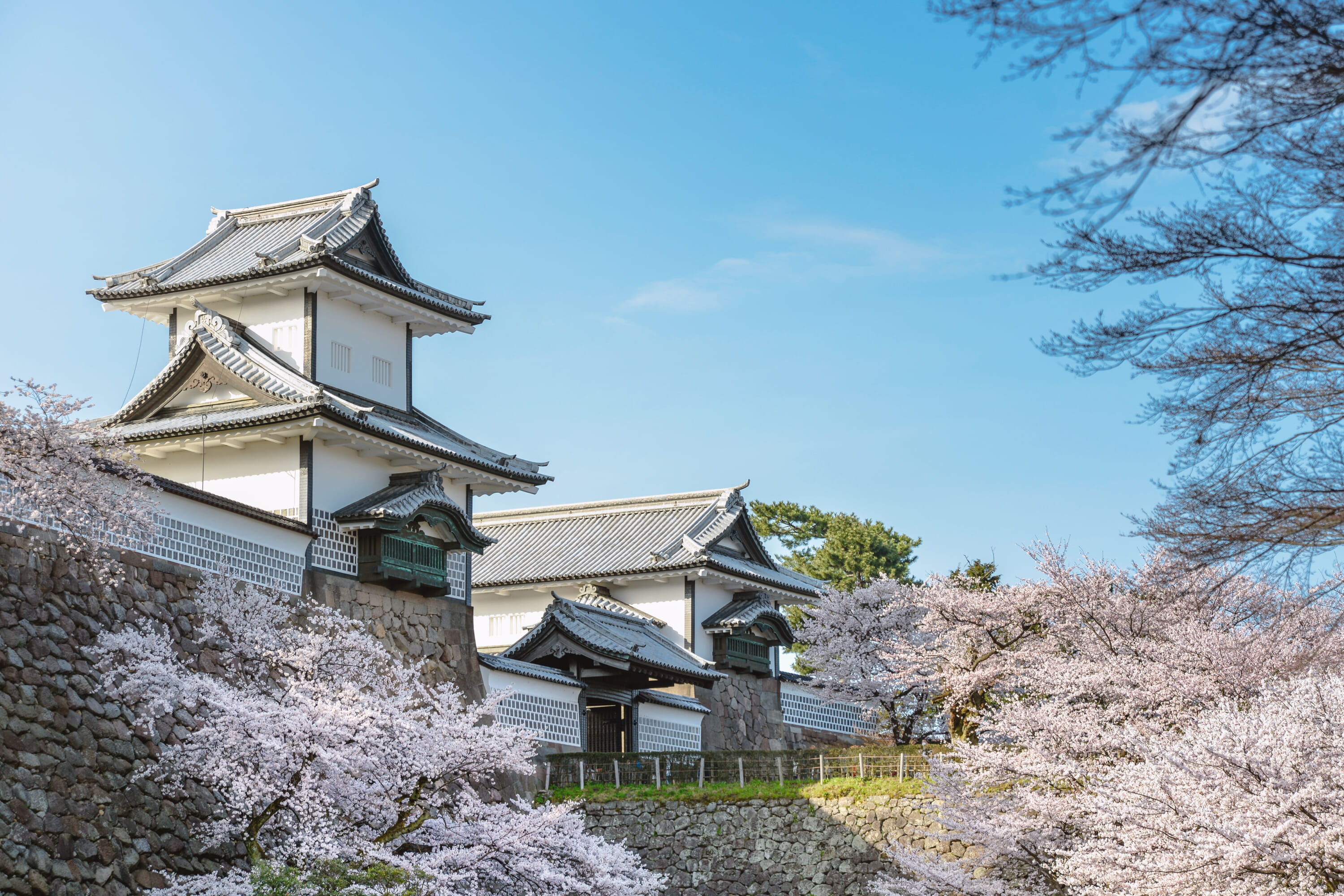
Art and Culture
22. Kaga is known for its traditional crafts, including hand-painted Kutani-yaki pottery and Kaga Yuzen-dyed silks. You can experience making your very own at the Yunokuni no Mori Traditional Craft Village.
23. If you can’t get enough of Ishikawa’s crafts, visit Kutani Chinaware Ceramic Art Village to become even more familiar with the ceramic-making process. You can learn more about kutani ware through TW’s very own guide.
24. If you’re visiting Ishikawa in August, you won’t want to miss the Wajima Taisai Festival, a four-day, high-energy event. The festivities culminate with a lantern festival to celebrate the year’s fish catch.
25. If you’re a fan of lanterns but can’t catch the Wajima Taisai Festival, stop by the Wajima Kiriko Art Museum for a glimpse of the bright festivities.
26. At the Okunoto Salt Farm Village, you can witness Noto Peninsula’s centuries-old salt-farming techniques.
27. The National Crafts Museum recently moved from Tokyo to Kanazawa. A popular tourist attraction, you can see traditional and innovative crafts that honor Japan’s natural beauty.
28. Kanazawa is famous for its confectionery which is not only delicious but beautiful to look at. At the Kanazawa Confectionery Wooden Molds Museum, you can look at rows of wooden molds and learn about the craft of Japanese confectionery.
29. Hakui, in the Noto Peninsula, has the highest rates of UFO sightings in Japan. Visit the Cosmo Isle Hakui museum to look at NASA artifacts and photos of UFO sightings for an interstellar afternoon.
30. If you’re a car buff, the Motorcar Museum is Japan’s first and largest automobile museum, with a wide range of cars on display.
31. In Kaga, there’s a museum dedicated to Ukichiro Nakaya, the first person to make artificial snowflakes. Visit the Nakaya Ukichiro Museum of Snow and Ice to make your very own ice pendant.
32. Visit the Kanazawa Architecture Museum to commemorate Yoshiro Taniguchi, a renowned architect and the first honorary citizen of Kanazawa.
33. The Mawaki Site, or Mawaki Ruins, is the ruins of a settlement all the way from the Jomon period. Witness the unearthed pottery and furniture at the museum.
34. Kamu Kanazawa is another contemporary art museum well worth a visit. It boasts an iconic infinite staircase built into the structure.
35. Visit the D.T. Suzuki Museum to reflect on and explore the ideas of Daisetz Suzuki, a famous Buddhist philosopher.
36. The IACK Art Book Shop is an “open study” shop that houses and sells an extensive collection of contemporary books.
37. Kanazawa is famous for its tradition of gold leaf craft skills. You can visit the Hakuza Gold Leaf Store to look at, purchase and even make your own golden art.
38. The Notojima Glass Art Museum showcases modern glass sculptures and historic Chinese and Japanese glass works, with 13 sculptures changing with the seasons.
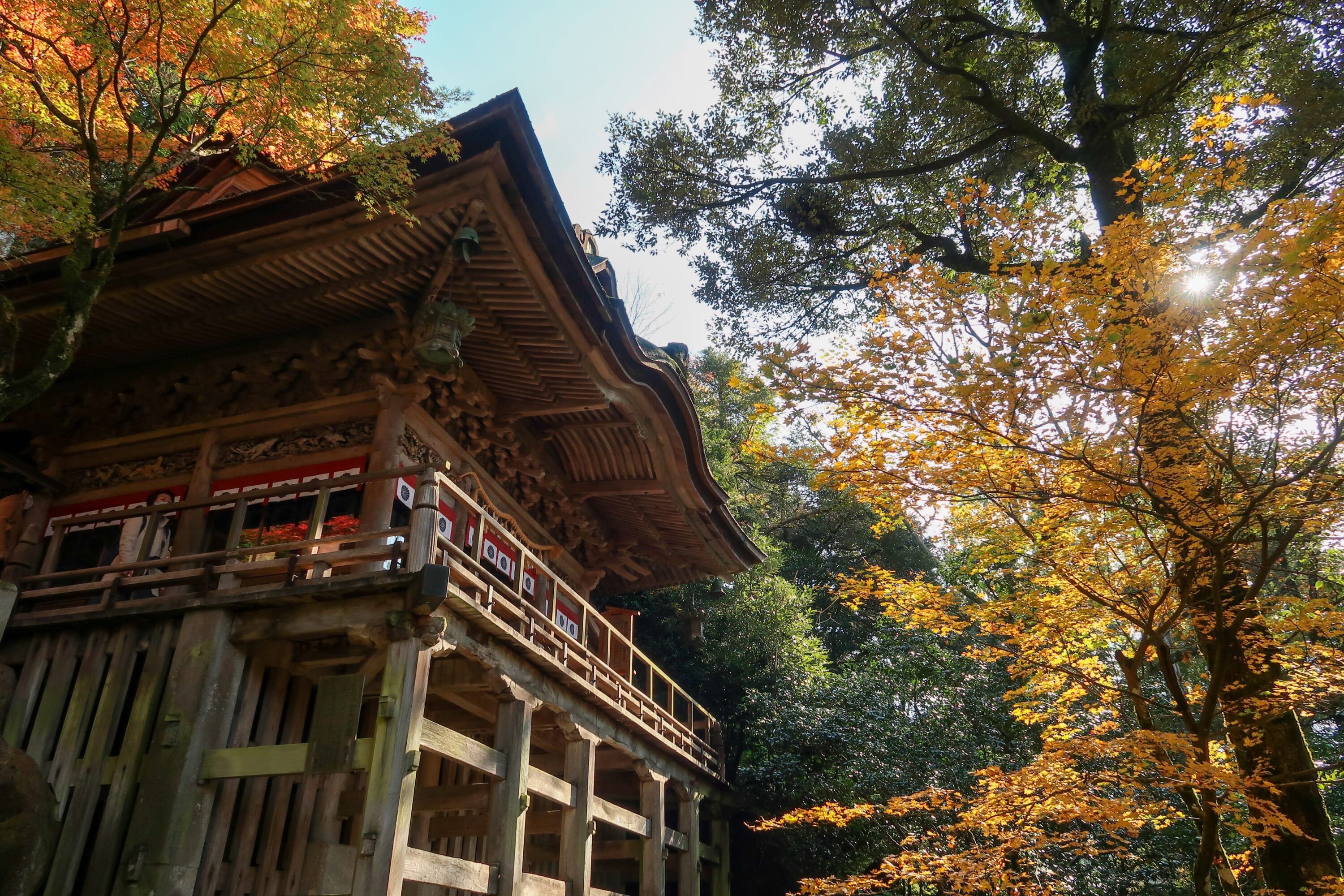
Shrines and Temples
39. Ukimido Temple, also known as the Floating Benten Temple, is built on the Shibayama Lagoon. As the name suggests, it looks like it’s floating.
40. The Yamanoshita Temple Group is a collection of seven temples and one shrine put together by the Daishoji clan.
41. The Oyama Shrine served as a symbol of Kanazawa in the late 1800s. Its Western and Chinese influences make it a shrine like no other.
42. Shirayama Hime Shrine is over 2,000 years old and stands to honor the sacred Mount Hakusan. You can partake in the misogi purification ritual during group tours.
43. Natadera Temple has been a sacred place of worship since the Jomon period and sits beautifully among rock formations.
44. The most prominent shrine in the Noto Peninsula, the Keta Taisha Shrine enshrines Onamuchi, a deity of love. You can visit the shrine with a lover or if you’re looking for some love in your life.
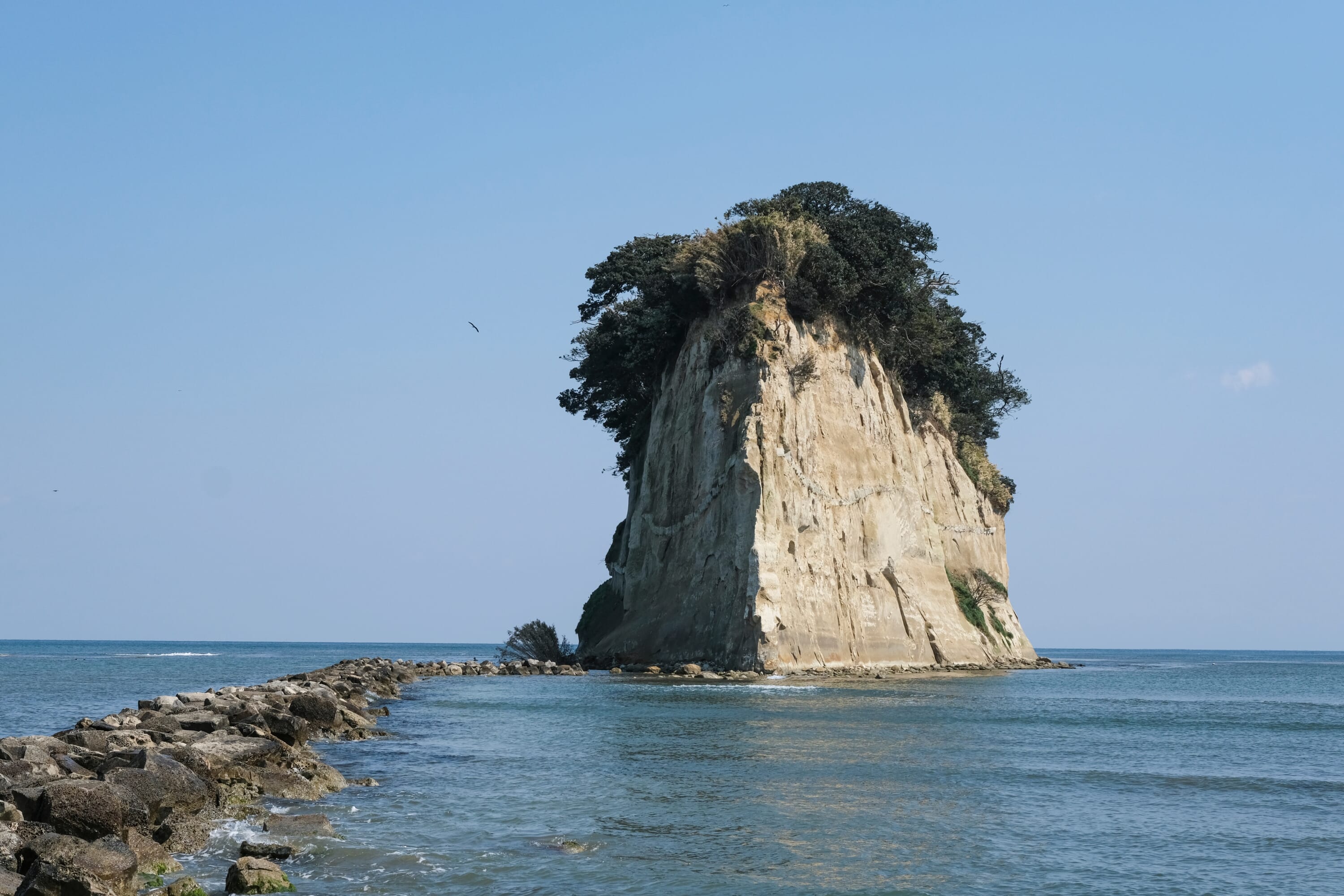
Nature and Scenery
45. The Kakusenkei Gorge runs through a forest near Yamanaka Onsen village. It boasts unique rock formations and fascinating foliage that changes with the seasons.
46. The Tsukumo Bay coastline stretches for 13 kilometers and is scattered between several coves. In the middle of it is Horajima Island. You can explore the waters by boat, kayaking or by snorkeling.
47. Right off the coast of the Noto Peninsula, Notojima Island is a perfect place to melt into a rural lifestyle. Access the island with a bridge connected to the mainland. Explore the black-tiled roofed homes with the ocean as a backdrop.
48. Swim with wild dolphins. You just need a snorkel and no advanced techniques are necessary.
49. The Watagataki Waterfall gets its name of “wata” from its cotton-like appearance. Falling a stunning 32 meters, you can get the best view of the waterfall from the gorge.
50. Take a boat ride from March to November to visit Ganmon, a dramatic sea cave in the Noto Peninsula with pine trees growing on top.
51. Explore Kaga’s scenic coastline by taking a trip to Cape Kasa no Misaki, known for its iconic white lighthouse.
52. Witness Mitsuke Island, a rock island with a sand beach called Koiji, or “love road.”
53. Visit Hegura Island, a small island accessible by ferry for a quaint trip away from the mainland.
54. Look at the Godzilla Rock in Suzu city of Noto, a rock formation that uncannily resembles our favorite city-attacking monster.
55. If you can’t get enough of rocks that look like fictional characters, stop by at the Totoro Rock, a rock 10 meters in height a little north of the longest bench in the world.
56. Sosogi Coast is full of cliffs and formations. You can see the water from Tarumi Falls on a windy day. Witness the “nami no hana” (wave flower) phenomenon in the winter, when the water foams on the shore.
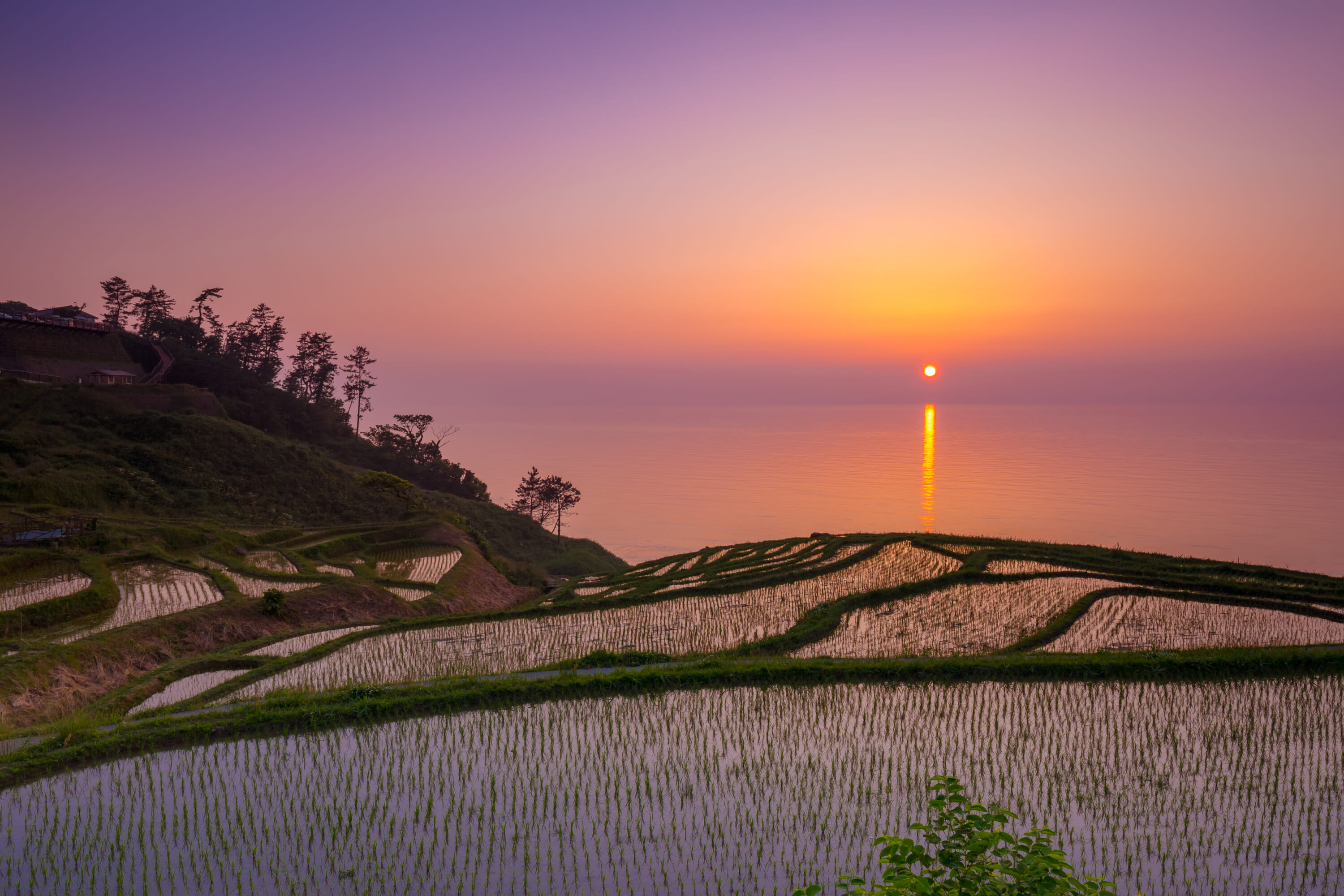
Miscellaneous
57. Check out Tsukiusagi no Sato (Village of the Moon Rabbit) to interact with friendly bunnies that roam freely within the park.
58. Relax at the historical Wakura Onsen, said to have sprung 1,200 years ago, when a wounded egret was found healing in the bubbling springs.
59. Nagamachi Samurai district is a preserved historical area where samurai and their families used to live. While you’re there, stop by Nomura-ke, a restored samurai residence.
60. The JR Kanazawa Station has a large glass dome and a wooden gate. It is an iconic symbol of Kanazawa.
61. The builder of the Noto Great Buddha of Longevity is said to have lived until 100. Visit this famous Daibutsu to pray for a healthy, long life.
62. The Yanagida Botanical Park is a whopping 30 hectares of forest and gardens, with a path to wind through various plazas, restaurants and shops.
63. The squid statue on the Noto Peninsula, a 13-meter monument, caused quite a stir when it was built with COVID-19 funds. However, the statue is now a popular tourist attraction and has generated over 22 times its construction cost.
64. Check out the Notojima Aquarium, home to 40,000 creatures of 500 species, including whale sharks.
65. Visit the Sodegahama Camp Site near the beach in Wajima.
66. For the romantics, stop by the Kanazawa Minami Sports Park Rose Garden to see more than 146 species of 1,800 roses. The best time to visit the rose garden is from late May to June, and late September to mid-October.
67. The Ninja Weapon Museum in Kanazawa has plenty of authentic weapons on display. You can even throw ninja stars to feel like a true ninja yourself.
68. The Hakusan-Roku Theme Park is a natural park where you can enjoy river terraces built on rock formations caused by erosion and Japanese wisteria trellises.
69. Visit the Ishikawa Zoo to interact with seals, monkeys, elephants and all your favorite animals.
70. The Hakusan Dinosaur Park has dinosaur fossils from all over the world and an interactive fossil-digging experience to test your excavation skills.









